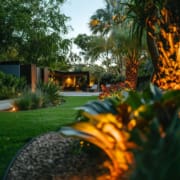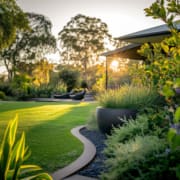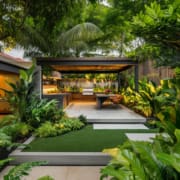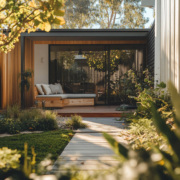How to Plan and Budget for a Landscaping Project in Brisbane
Planning and budgeting for a landscaping project can be both exciting and challenging. In Brisbane, with its subtropical climate and diverse plant life, creating an outdoor space that meets your needs and enhances your property requires careful consideration. Here’s a step-by-step guide to help you effectively plan and budget for your landscaping project, ensuring a successful outcome.
Defining Your Project Goals
Before diving into the details of your landscaping project, it’s essential to define your goals. Consider what you want to achieve with your renovation. Are you aiming to create a relaxing outdoor retreat, a functional space for entertaining, or a low-maintenance garden?
Identifying Your Needs
- Purpose: Determine how you will use the space—whether for relaxation, family activities, or gardening.
- Aesthetic Preferences: Decide on the style you prefer, such as modern, traditional, or tropical.
- Functional Requirements: Consider any specific needs, such as seating areas, play spaces for children, or outdoor kitchens.
Consulting with a Professional
Engaging with a professional landscaper can provide valuable insights and help refine your vision. They can offer advice on design options, plant selection, and practical considerations based on Brisbane’s climate.
Assessing Your Existing Landscape
A thorough assessment of your current landscape is crucial for planning a successful renovation. Evaluate the existing features and conditions of your garden.
Evaluating Site Conditions
- Soil Quality: Test your soil to determine its type and quality. This will influence plant selection and soil preparation.
- Sunlight and Shade: Observe how sunlight and shade affect different areas of your garden.
- Drainage: Identify any drainage issues that need addressing to prevent waterlogging and erosion.
Reviewing Existing Features
- Hardscaping Elements: Take note of existing paths, walls, and structures that may need to be integrated into the new design or removed.
- Plant Life: Assess the health and suitability of existing plants and decide which to keep, relocate, or replace.
Creating a Detailed Design Plan
With your goals and site assessment in mind, create a detailed design plan for your landscaping project.
Designing the Layout
- Sketching Your Ideas: Start with a rough sketch of your garden layout. Include key elements such as garden beds, pathways, and seating areas.
- Using Design Software: Consider using landscape design software for a more detailed and accurate representation of your ideas.
Choosing Plants and Materials
- Plant Selection: Choose plants that are suitable for Brisbane’s climate and soil conditions. Consider factors such as water requirements, growth habits, and maintenance needs.
- Materials: Select materials for hardscaping elements like patios, walls, and paths. Opt for durable, sustainable materials that complement your design.
Establishing a Realistic Budget
Budgeting is a critical aspect of planning your landscaping project. A well-structured budget helps you manage costs and avoid unexpected expenses.
Estimating Costs
- Design and Planning: Include costs for professional design services if applicable.
- Materials: Calculate the cost of plants, soil, mulch, hardscaping materials, and any additional features.
- Labour: Factor in the cost of hiring landscapers or contractors for installation and construction.
Allocating Funds
- Prioritising Expenses: Allocate your budget to key areas based on priority. For example, you may choose to spend more on high-impact features like water elements or outdoor kitchens.
- Contingency Fund: Set aside a contingency fund of around 10-15% of your total budget for unexpected costs.
Managing Your Project
Effective project management ensures that your landscaping project stays on track and within budget.
Scheduling and Timelines
- Project Phases: Break down your project into phases, such as design, preparation, installation, and finishing touches.
- Timeline: Create a realistic timeline for each phase, taking into account potential delays due to weather or supply issues.
Communication and Coordination
- Regular Updates: Maintain regular communication with your landscaper or contractor to monitor progress and address any issues promptly.
- Decision-Making: Make decisions quickly to avoid delays and ensure that the project proceeds according to plan.
Ensuring Quality and Sustainability
To achieve a successful and lasting result, focus on quality and sustainability in your landscaping project.
Quality Assurance
- Material Quality: Choose high-quality materials that will stand up to Brisbane’s weather conditions.
- Professional Installation: Ensure that installation is carried out by experienced professionals to achieve the best results.
Sustainable Practices
- Water Conservation: Implement water-saving practices, such as rainwater harvesting and efficient irrigation systems.
- Eco-Friendly Materials: Opt for sustainable and environmentally friendly materials wherever possible.
Enjoying Your New Landscape
Once your project is complete, take the time to enjoy and appreciate your newly renovated outdoor space. Regular maintenance will keep your garden looking its best and ensure that it continues to meet your needs.
Planning and budgeting for a landscaping project in Brisbane requires careful consideration and preparation. By defining your goals, assessing your existing landscape, creating a detailed design plan, establishing a realistic budget, and managing the project effectively, you can achieve a successful and rewarding outcome.
For expert guidance and assistance with your landscaping project, contact Live Outdoors. We can help bring your vision to life, ensuring a beautiful and functional outdoor space that enhances your home and lifestyle.



